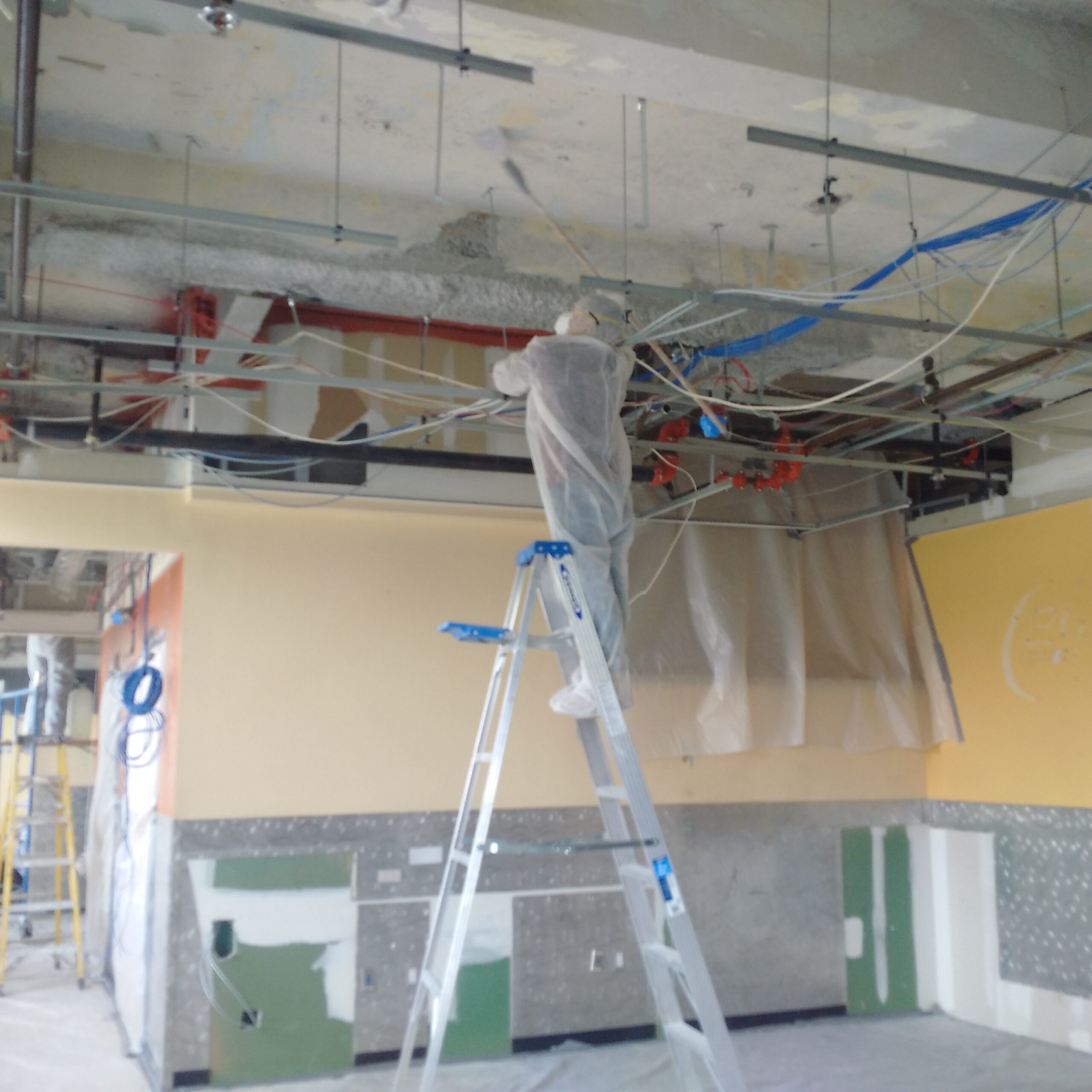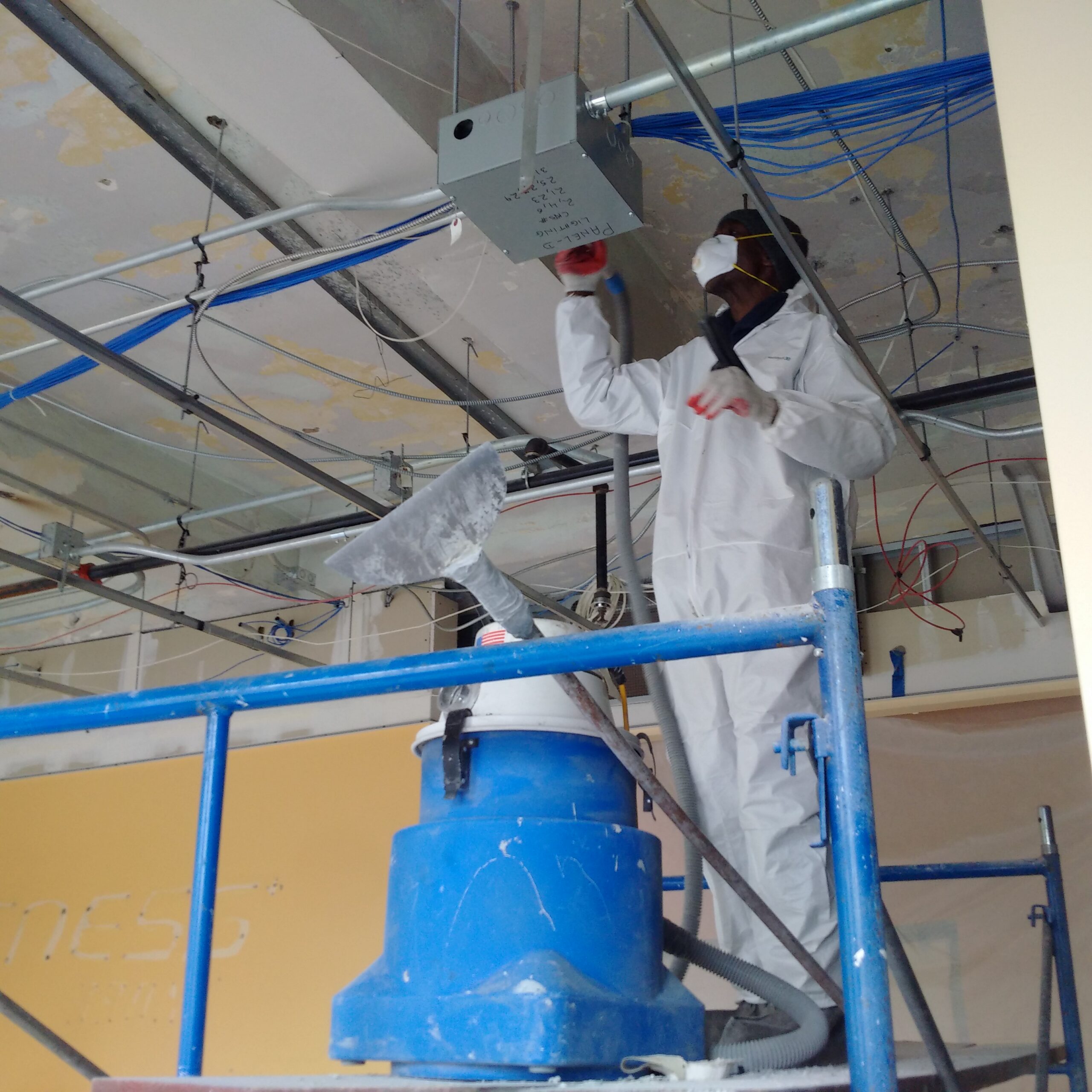Lead Paint Removal Service-- NYC's Trusted Solutions for Lead Safety
Lead Paint Removal Service-- NYC's Trusted Solutions for Lead Safety
Blog Article
Comprehensive Overview on Effective Lead Violation Removal Methods
In the world of ecological safety and security, addressing lead offenses demands a precise and organized approach. This extensive guide starts by highlighting the essential first actions of identifying lead hazards through sophisticated evaluation and testing techniques. Methods such as XRF evaluation and dust wipe sampling are essential in identifying contamination sources. Additionally, the guide elaborates on the significance of sticking to stringent safety and security protocols during the removal process, including using correct PPE and separating influenced locations (Lead Paint Removal Company). The subsequent sections promise to discuss post-removal confirmation and preventative methods, guaranteeing long-term safety and security and conformity. Discover the detailed information that make these strategies not just effective yet crucial.
Recognizing Lead Dangers
Determining lead dangers is an important first step in reducing the dangers connected with lead direct exposure. Lead, a poisonous steel, can be existing in various ecological tools, consisting of paint, dirt, water, and dirt.
The first stage in recognizing lead hazards involves understanding usual lead resources within the constructed setting. Frameworks constructed prior to 1978 are specifically at risk as a result of the widespread use lead-based paint during that period. Additionally, dirt contamination can take place from deteriorating outside paint, commercial exhausts, or historic usage of leaded fuel.
Another significant resource is lead piping and pipes components, which can seep introduce alcohol consumption water. Customer items such as playthings, ceramics, and imported products might additionally have damaging lead levels. Notably, occupational environments and leisure activities including lead can track pollutants into homes.
Analysis and Screening
When attending to lead risks, effective analysis and screening are critical. This essential step makes certain the identification and metrology of lead existence, thereby leading succeeding remediation initiatives. Preliminary assessment commonly includes an aesthetic assessment to identify possible lead sources, such as deteriorating paint or infected dust. This is enhanced by more strenuous screening methods to establish the degree of contamination.

Dirt clean sampling is one more essential technique, especially in property setups. By collecting examples from floorings, windowsills, and other surfaces, this approach gives understandings into possible exposure risks. Moreover, dirt screening around structure perimeters is necessary to spot lead contamination that might present threats, especially to children.
Safe Elimination Treatments
Upon finishing complete analysis and screening, carrying out secure elimination treatments is the following important phase in attending to lead dangers. This process guarantees that lead-contaminated Get More Information materials are effectively and securely gotten rid of, decreasing danger to both workers and locals. The very first step entails separating the damaged location utilizing plastic sheeting and proper securing methods to stop the spread of lead dust.
Employees need to put on appropriate individual safety tools (PPE), consisting of respirators, handwear covers, and non reusable coveralls, to reduce exposure. Using specialized tools and wet methods, such as damp fining sand or using HEPA-filtered vacuum cleaners, minimizes the diffusion of lead fragments. It is crucial to avoid dry sanding or rough blowing up, as these techniques can create damaging lead dust.
Waste disposal is another important element; all contaminated materials have to be firmly landed and classified according to EPA and local laws. Furthermore, complete cleansing of the work area with HEPA vacuum cleaners and damp wiping ensures the removal of recurring lead fragments.
Post-Removal Verification

Verification of effective lead elimination, understood as post-removal verification, is essential to guarantee the safety and security and habitability of the remediated location. This inspection guarantees that all well-known resources of lead have actually been attended to and that no visible signs of contamination continue to be.
Adhering to the aesthetic evaluation, ecological tasting is conducted. This includes accumulating dust, soil, and sometimes water samples from the remediated area. Accredited research laboratories assess these samples to determine lead degrees, ensuring they fall below the safety limits established by governing bodies such as the Epa (EPA)
On top of that, air high quality testing might be carried out to spot airborne lead fragments, especially in instances where substantial lead-based paint removal or improvement has actually occurred. The results of these tests provide quantitative data confirming that the lead levels are within permitted limitations.
Eventually, post-removal confirmation works as a crucial checkpoint, confirming the performance of the lead abatement initiatives and safeguarding the health of occupants and visitors.
Preventive Procedures and Maintenance

A vital preventative measure consists of the usage of lead-safe accredited professionals for any click this link type of improvement, repair work, or paint tasks. These professionals are trained in methods that reduce lead dust and debris. Additionally, keeping painted surfaces to stay clear of damaging or peeling is essential, as wearing away paint can release lead bits into the atmosphere.
Educational campaigns targeting residential property proprietors and occupants regarding the dangers of lead and the value of reporting any possible dangers can further enhance preventive efforts. Routine cleaning making use of HEPA vacuums find out and wet mopping techniques can dramatically decrease lead dust buildup.
Conclusion
In recap, reliable lead infraction removal demands a thorough strategy including detailed evaluation, precise screening, and rigorous elimination procedures. Ensuring safety via proper isolation and personal safety devices remains critical. Post-removal confirmation via environmental sampling and air quality screening substantiates conformity with well established safety criteria. In addition, ongoing examinations and upkeep are vital to reduce future lead threats, consequently securing public health and making certain continual conformity with governing needs.
Report this page